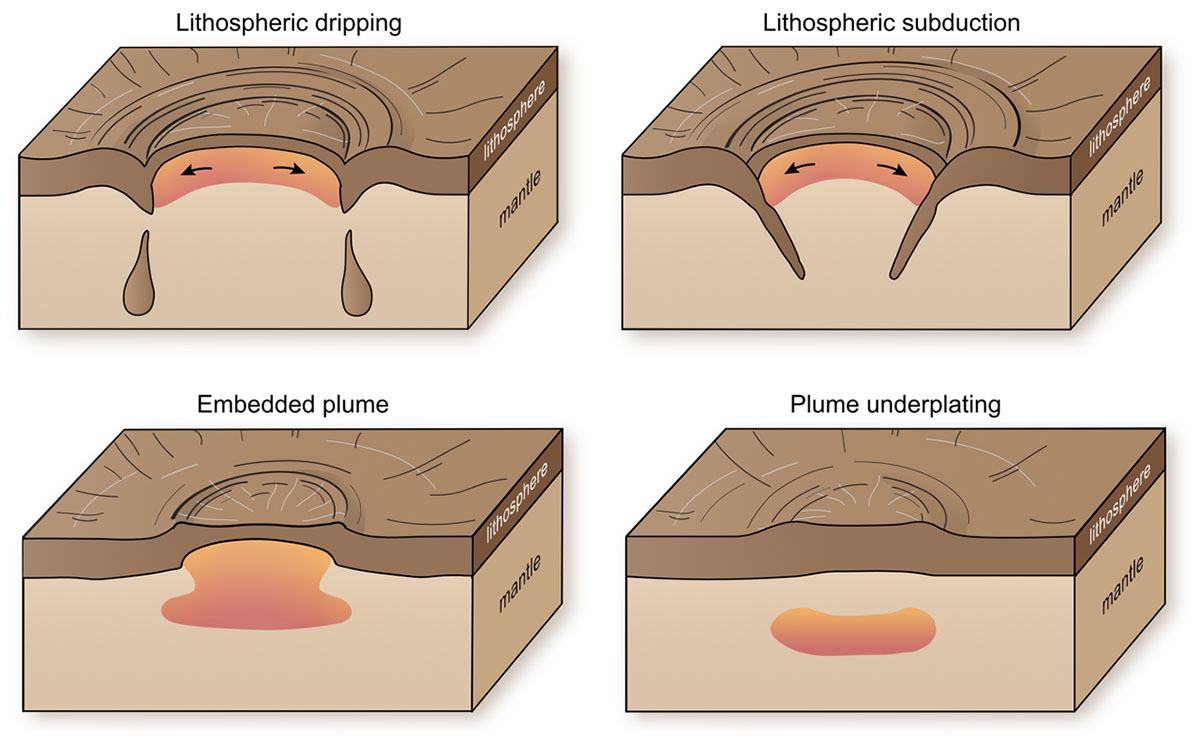Home These illustrations depict various types of tectonic activity thought to persist beneath Venus’ coronae. Lithospheric dripping and subduction are shown at top; below are and two scenarios where hot plume material rises and pushes against the lithosphere, potentially driving volcanism above it. (Anna Gülcher, CC BY-NC) These illustrations depict various types of tectonic activity thought to persist beneath Venus’ coronae. Lithospheric dripping and subduction are shown at top; below are and two scenarios where hot plume material rises and pushes against the lithosphere, potentially driving volcanism above it. (Anna Gülcher, CC BY-NC)
These illustrations depict various types of tectonic activity thought to persist beneath Venus’ coronae. Lithospheric dripping and subduction are shown at top; below are and two scenarios where hot plume material rises and pushes against the lithosphere, potentially driving volcanism above it. (Anna Gülcher, CC BY-NC)



